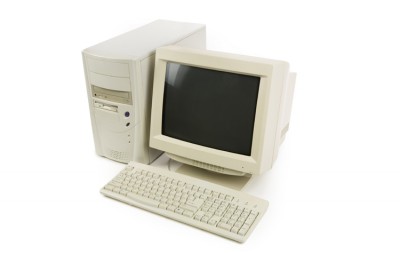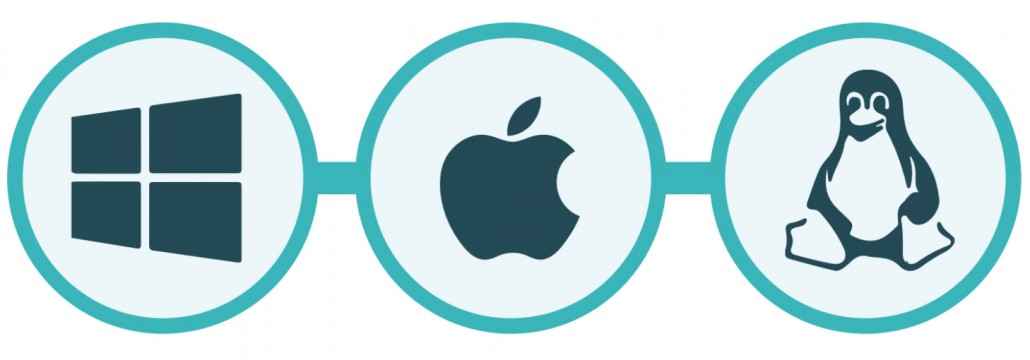What is Modern IT?

Modern IT is always evolving, innovating, and changing. Take the network for example. A modern, wireless IT infrastructure is completely unrecognizable from the LAN networks created by IT teams a decade or more ago.
Back then, there was only one legitimate enterprise solution: Microsoft. This included Windows for the operating system (OS), Office for the productivity suite, Exchange for email, and Windows Server and Active Directory® (AD) for directory services. The piece that tied them all together was AD. This Microsoft solution enabled administrators to control the complete IT infrastructure and network, including tools like the OS, file shares, and all the way down to the core user identity.
Microsoft Windows technology formed the backbone of most organization’s infrastructure, which made management with Active Directory simple and easy to use. It all just worked together, but that was for a homogenous Microsoft enterprise.
Oh, how the times have changed.
The greatest strength of the Microsoft model was also its downfall. Microsoft did a wonderful job of creating a homogenous ecosystem of management tools for their solutions so IT admins could easily manage an all-Microsoft network. This was encapsulated by the Active Directory installation, which provided the core identity. There was seamless functionality with a Microsoft directory connecting to all Microsoft resources. However, as Mac and Linux machines were introduced to the enterprise, this AD user management model was not as smooth.
InIn fact, the Active Directory model breaks down very quickly in a heterogenous environment. The problem is driven from the fact that AD, and Microsoft technologies at large, were primarily created and predicated on a true ‘on-premises’ implementation. The cloud was never a factor (or dream) during its evolution.
What used to “just work,” now just doesn’t.
To make up for Microsoft’s holes, new SaaS based services are taking over. Software-as-a-Service (SaaS)-based applications turned the conventional software model on its head. This trend began taking hold in 2004 around the time Salesforce® went public. Instead of being installed via CD-ROM, apps like Salesforce were delivered from the cloud through the employee’s web browser – no footprint on a Windows machine needed. In fact, no Windows machine was even required.
This lack of necessity on Microsoft machines was also becoming apparent in the enterprise. Back in 2000, Microsoft owned nearly 97% of the market share. By 2010, Apple was making strong moves in the enterprise, in addition to other companies. As a result, Microsoft now only owns a 20% market share [Forbes].
Today, you can find iPhones, iPads, and Macbooks at companies like IBM, Cisco, and Google. When you add Chromebooks, Linux machines, AWS, and the extensive amount of cloud tools, it’s easy to see the writing on the wall:
The modern office doesn’t need to be centered around Microsoft technology anymore – and it probably never will be again.
Today, many IT organizations rely on technology that doesn’t have any Microsoft dependencies. With the change to different types of resources, there is a new problem presenting itself to IT organizations. Companies want to use all of these modern platforms and the massive amount of cloud tools that are becoming available, but remain unable to do so because of the lack of management capabilities available with current directory services solutions. For example, Active Directory limits management for non-Windows resources and has forced admins to either set up difficult work arounds or allow unmanaged services to be in the organization. IT has lost control over their landscape.
So, how can IT organizations regain full control over their environment and make the leap to the cloud? This question applies equally to the Microsoft enterprise, to organizations that are in transition to the cloud, and to non-Microsoft resources. The answer starts at the ground level of IT management: the directory.
The History of Directories in IT Environments

Twenty years ago, the world was exclusively an “on-prem” world. Prior to the advent of modern directory services for authentication and authorization needs, organizations were utilizing a computer networking standard called X.500 for underlying directory services. X.500 was able to support the requirements of electronic mail exchange and name lookup [Wikipedia], and is sometimes referred to as a “global White Pages directory.” However, X.500 was too heavy a protocol for most machines. In order to accommodate the computers that were on most people’s desktops, the LDAP protocol was created. This protocol was lightweight and optimized for the Macs and PCs that everyone used. It was the core underlying authentication protocol of LDAP that marked the beginning of the modern era of directory services. LDAP created the opportunity for Microsoft to leverage some directory services technology in Windows NT, a rudimentary solution that was the precursor to their much more prominent solution, Microsoft Active Directory. Those releases were game-changing, and effectively laid a simple UI over the top of complicated directory technology management. These solutions kicked off the directory services market by enabling easier accessibility and control to IT admins.
Active Directory has been an industry standard ever since its release in 1999. With AD, a user could navigate through a GUI to adjust options and settings, as opposed to manually coding, to establish not only it’s setup, but all of the role-based access controls (RBAC) an organization needed for its users, as well. Before moving to AD, these same IT admins struggled to work programmatically against X.500 or LDAP to get the same results. Microsoft commoditized everything about that prior reality.
Even though the Internet existed in the 90’s, very few organizations had outward connections to the world wide web. At the time, a network was really more focused on connecting computers internally. The local area network (LAN) created the networking backbone to integrate and shuttle data between endpoints (e.g., an employee accessing a file on a server from their workstation or a client/server application), ultimately helping employees to do their jobs. In large part, these protocols of the LAN replaced historically manual processes for an employee to do their job (e.g., an employee walking to a filing cabinet to get a file). With this system, most IT groups focused on their LAN, the efficiencies of their internal employees, and the jobs they needed to do locally.
Then came the mass adoption of the Internet, causing a seismic shift in IT.
The concept of an organization being networked with the rest of the world was eye-opening. It was a game-changer with respect to how organizations could market and sell their goods. An organization could open their storefront to the world with a website available 24x7x365.
For example, Microsoft’s email implementation through Exchange was the killer application of this generation of IT, enabling much greater speed and efficiency by which organizations could now conduct their business. Exchange and a wide array of other enterprise solutions from Microsoft meant that a business could own their own destiny ‘in a box’: their domain, their computing, their selling, and all forms of communication.
Even though Microsoft was late to the ‘pure-play’ Internet game, they caught up quickly. Alongside their internal IT management tooling (email clients, directory, file shares, etc.), they offered a web server and other networking solutions. However this delay opened the door for alternatives to arise.
New Landscape, New Competition

Microsoft was facing stiff competition during this period by a new dawn of software and business models: open source and freemium solutions.
Companies like Microsoft and IBM charged licensing fees for their solutions. While plenty of IT teams were willing to pay, others sidestepped the fees via open source or “freemium” alternatives. Through these models, organizations were able to acquire solutions that could replace the Microsoft and IBM solutions, with little to no cost. Savvy engineers could utilize Linux for server infrastructure and the Java-specific “LAMP” stack (Linux, Apache, MySQL, and PHP) to develop their websites, all while avoiding the licensing fees.
But a few developers on Linux were small potatoes compared to the millions of employees with Word, Powerpoint, and Excel installed on their computers. Microsoft’s deep foothold in IT and the employee-facing areas of the company through its email and employee productivity tools (what we know now as the Office suite) was still firmly in place. Their success in the front office only fueled their ambitions to own the back office of enterprises as well.
Microsoft was in a favorable position to do just that, and they executed with AD, SMS, Exchange, and their other products. But there were changes on the horizon they didn’t anticipate. The Internet was maturing alongside open source software, and that combination forged the path for a new generation of engineering approaches that would change enterprise IT forever.
Cloud computing began to take shape in the early 2000s, forever transforming both software and hardware. Not only could servers be hosted remotely via the Internet, but core applications could be cloud-based, removing the need for the ‘thick client’ app to be installed on a Windows system.
Apps could now be available anywhere, at any time, from any system that had a connection to the Internet and a web browser to access it.
The benefits were enormous for IT organizations. IT infrastructure would be shifted to a third party provider, and the organization would effectively lease capacity for server computing or subscribe to use progressive applications from a “Software-as-a-Service” provider, as they would come to be called. This opened up incredible possibilities for IT teams to service their employees more efficiently. No longer would they need to maintain servers in the proverbial server closet. No longer would they need to be involved in every purchase due to this need to manage server infrastructure.
Winds of Change Create Turbulence for Microsoft

The cloud taught us that the OS was less critical. Your internet connection and mobility mattered more, and as a result Microsoft was left vulnerable to these large-sweeping changes.
Of course, it would take many years for IT organizations to become comfortable with the cloud (some still aren’t even today). Battle-hardened IT pros balked at things out of their control: security issues, availability, reliability, and performance were all significant concerns in adopting cloud technologies. Additionally, the more existing on-premises systems and resources that were in place, the more issues there were with integration. This created huge friction and reluctance from IT admins to adopt the new approach.
It was the small, upstart organizations that dipped their toes in the water first – and quickly discovered that it was warm. These organizations didn’t just become accustomed to cloud applications and infrastructure – they came to find it invaluable. With the benefit of being able to move more quickly and have less fixed infrastructure and costs, startups could now better compete against their larger, more mature brethren.
Of course, you already know how this story ends. The large organizations eventually took notice and began to follow suit. Today, the cloud is a major part of just about any IT organization’s strategy.
While the cloud was emerging, so too was another critical technology: mobile devices.
Long before the propagation of smartphones and tablets, cellular phone technology transformed the concept of mobile communication. Cell phones made it easier for businesses to communicate efficiently, especially for enterprises with a traveling workforce. It was a big deal at the time and, by 2007, 75% of American adults owned a cell phone [Pew Research]. Then everything changed all over again when we literally were able to carry the Internet in our pockets.
Where was Microsoft for this? Just as with the broad adoption of the Internet in offices, they lagged behind. Meanwhile, Apple and Google capitalized.
The iPhone debuted in 2007 – and the world would never be the same again. The form and function of the iPhone and its touch-based iOS interface miniaturized the experience of computing on your laptop, yet could be done from anywhere there was a cell signal.
What few predicted was that the iPhone would be Apple’s “side door” into the enterprise. Before this, Apple was largely a consumer product company. Then, CEOs and business decision makers started using their iPhones for company email. Just like that, IT at formerly Microsoft-centric enterprises was being tasked with managing Apple products.
Seeing this trend, Google began to throw its considerable weight into mobile access to the Internet. Google differentiated its Android platform from Apple by making it open source.
Just like that, a new OS rivalry was born – iOS vs. Android – only this rivalry was one that was completely devoid of Microsoft.
Smartphone adoption took off like a rocket. By 2011, 35% of Americans had smartphones; today, it is up to 77% [Pew Research, 2017]. When considering only business professionals, the percentage is even higher.
Employees preferred to do their work on devices that ‘felt better’ – and in many cases that meant Apple’s array of devices, from Macs to iPads. More and more, people were working independent of Windows systems, save the need to leverage Microsoft Office tools.
But Microsoft Office wasn’t impervious from innovation either.
As Apple encroached on Microsoft’s enterprise stronghold with hardware, Google attacked with software. In 2006, Google rolled out Google Apps – a suite of productivity apps aimed directly at the functionality of Office, but based entirely on the cloud.
Now called G Suite, their employee collaboration and productivity tools quickly became an alternative to Microsoft’s on-prem productivity solutions including Exchange, Office, Windows Server, and more. Today, more than 5 million businesses worldwide choose G Suite over Microsoft’s once-ubiquitous Office platform.

The result of IT’s evolution: Microsoft has a diminished role.
Between these two forces, Microsoft workstations and laptops went from representing nearly 9/10ths of the OS distribution in the 90s and early 2000’s to being 1/5th of the systems used today [Forbes]. Microsoft’s position as the dominant leader in enterprise OS had started to collapse.
The downstream impacts of that industry-wide ‘tectonic change’ have been significant. Taken in combination with the shift to cloud technology, there is little need for an organization to rely on Microsoft technology in this day and age. Virtually all IT infrastructure today can be accessed using a web browser, or the abstraction to Mac or Linux platforms, which is still good enough to not require Windows.
But if you already have Microsoft tools and technology in place, then is there any real reason to switch?
The answer to this question resides in how organizations think of IT
The New Role of IT

Historically, IT was a cost center in service of the rest of the business. Their job was to make it efficient to manage users and run both applications and systems on behalf of their end users and their customers.
For many organizations, that role has dramatically changed. Today, IT is an enabler and often can be a revenue driver. As an example, IT organizations can be diverted from user and application uptime support, to implementing the systems which lie at the core of their businesses: their product and service offerings. For instance, a sysadmin who historically managed access to file shares locally, and who now has instituted a cloud-based version of file sharing (e.g., Google Drive or Box), can now be diverted to mission critical needs such as scaling infrastructure to better serve the needs of their customers.
IT is looking for every edge it can find in order to be more agile, deliver better results, and to enhance security. IT isn’t looking to just get by, and there is every reason for the IT group to push for the best solutions for their team to ensure they are focused on what matters most for the company and its customers.
So, in order to fulfill the old role of IT, sticking with Microsoft is just fine. But there are more progressive services and platforms available to IT teams compared to what Microsoft can offer (or is offering). So yes, you can stay with Microsoft. But it is now a question of choice and flexibility for these IT admins and business units, and one that impacts the future of their companies.
Modern IT Infrastructure
To learn more about what a modern IT environment looks like, check out the next part of this series: “Modern IT Infrastructure.” In it, you will learn about many of the areas in IT that are innovating and growing, and how you can apply them in your office. You can learn about how to manage it by viewing the final installation of the series: “Managing the Modern IT Environment.” If you are interested in centralizing your identity and access management, you can also check out JumpCloud’s Directory-as-a-Service platform.
